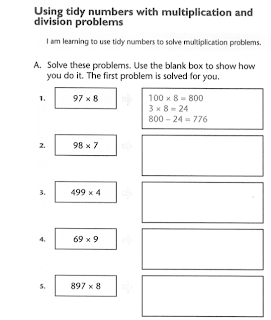Lattice Multiplication is the best, I am confident you guys are going to nail this concept and it will be really helpful but I would love to get your feedback.
Lattice Multiplication: Introduction to lattice multiplication
Try it with these equations, write the lattice in your books.
TUESDAY
LI to solve division problems using how many times one number will go into another
Quick revision on doubling and halving
Try these with decimals
Okay so now we are going to look at proportional adjustment
If only it was always this straightforward, although to be honest, 3 x50 is a pretty straightforward question. For these questions work across the page
Thursday LI to identify equivalency in mult/div problems
















































